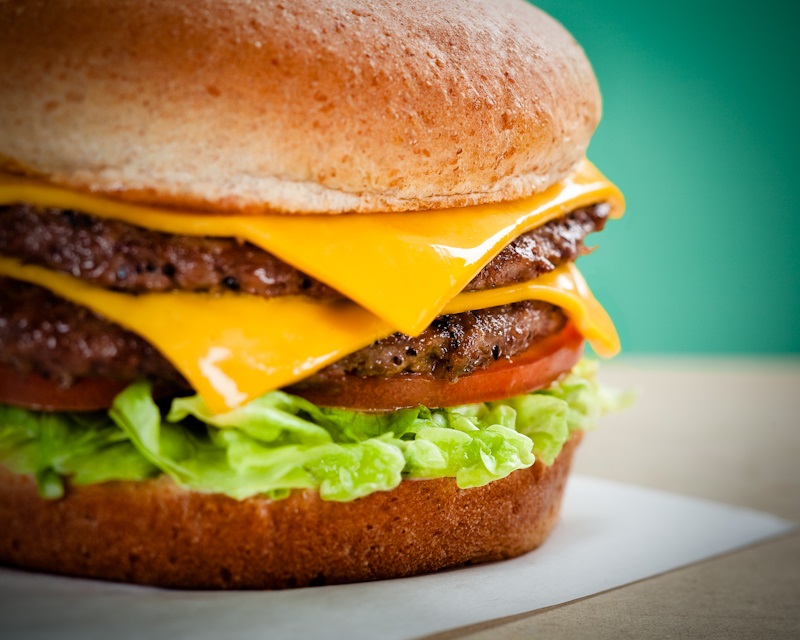The results are in for the Healthy Diet Score 2016 report - and it’s time for a reality check on what we are eating.

As a nation we love our junk food. . Image credit - Perry Hall/Flickr.
As a nation we love our junk food. Image credit – Perry Hall/Flickr.
Australians, your attention please, we need to have a chat about our latest report card. We have just released the Healthy Diet Score 2016 report and it’s time for a reality check on what we are eating.
We assessed the eating habits of over 86,000 Australians against the Australian Guide to Healthy Eating and we managed an average score of just 59 out of 100. By far, the worst offender is too much junk food. In turns out that we are eating almost three serves of ‘discretionary’ foods each and every day. Alcohol, chocolate, confectionery, cakes, biscuits, sugar and sweetened drinks – we’re loading up on the stuff.
We know what you’re thinking; a cupcake here, a few biscuits there, washed down with a wine or beer. Surely we’re allowed to have a few indulgences? The truth is, we should be limiting these treats to somewhere between 0-2.5 serves each day. While it all sounds a bit like the nanny state, the problem is that it all adds up, mostly around our waistlines.
A recent news story revealed that three in five people admitted to purchasing activewear, while only one in five people actually have a gym membership. It seems that we like to think we’re a healthy bunch, but the truth lies elsewhere.
“We have an image of being fit and healthy, but with a collective diet score of 59/100 that image could be very different unless we act now,” said Professor Manny Noakes, Research Director and co-author of the Total Wellbeing Diet.
We hate to break it to the blokes out there, but we are bringing down the average by consuming around one more serve of junk food each day compared to the ladies (3.4 vs. 2.4 serves). Alcohol accounts for more than a quarter of the discretionary food intake by men, and around 22% for women. It seems that the women love the sweet stuff too, with more than 20% of total junk food coming from chocolate and confectionery.

Mother cutting vegetables and looking down at young boy holding Total Wellbeing Diet book while standing at kitchen counter.
We need to up our intake of veggies and fruit.
In terms of occupation, construction workers are by far the worst junk food culprits with a whopping average of more than 29 serves each week. Retirees and health industry workers scored best with an average of 17.4 and 16.7 serves respectively.
It appears that we have lots of room for improvement across the board when it comes to eating the foods that are good for us. The closest that we come to meeting the Australian Dietary Guidelines is the fruit food group, but even then only half of those surveyed are meeting the recommended intake.
The report also showed that women are eating better than men, with an average score of 60 compared to 56 for the blokes. Older Australians are generally eating better, with those over 50 years scoring 61 compared to people aged 31-50 with a score of 57. Approximately one third of Australians also reported to be avoiding one or more food groups, with the highest rates of around 40% for women in the 18-30 age group.
But enough with the doom and gloom, it’s time to do something about it Australia! If the average person halves the amount of discretionary foods and doubles their vegetable intake, we will be well on the way to raising the collective average to a respectable score of 70 out of 100.
Shifting the dial to 70 will go a long way in maintaining a healthy weight and reducing the risk of developing chronic diseases such as Type 2 diabetes, some forms of cancer and heart disease.
“It is never too late to eat better and increase your score, and the nation’s. We encourage people to also take the test regularly to ensure they are improving their eating behaviour and overall health and wellbeing,” said Professor Noakes.
You can take the survey and see how your score weighs up here.


10th October 2016 at 2:27 pm
I hate the term ‘junk foods’ because it implies the food is inherently bad for you or lacking in nutrients and they should never be eaten. I would prefer the use of ‘discretionary foods’ as the problem is more to do with the amount consumed rather than the food itself. After all eggs would have been called ‘junk foods’ in the 1970s because they were thought to contain too much cholesterol and olive oil didn’t have enough unsaturated fat to be considered a healthy fat. Nor is every individual the same. I don’t have a sweet tooth and rarely consume high sugar foods like biscuits, cakes or icecream or drinks so I don’t feel that I need to reduce my sugar intake although someone else might. If anything it is the diet that should have the ‘junk’ label not the food.
As scientists I believe we should try to be accurate and precise and I believe using the term ‘junk food’, is non-scientific and should be left to the media.
14th October 2016 at 8:39 am
Hi Brigitte,
We appreciate that ‘junk food’ isn’t a scientific term, but the general public can more easily relate to it when referring to discretionary foods. We like ensure that are blogs are accessible as possible, which is why we use both the terms ‘junk food’ and ‘discretionary food’ throughout the blog.
Regards,
Ellen
CSIRO Social Media
5th October 2016 at 4:08 pm
But vegetables taste AWFUL!! Maybe fry them!? Like poteto chips!? No? Bugger … GENETIC MODIFICATION!!? So that it tastes like chips??
Remember Bill Cosby? “Zero sugar, zero salt, zero fat, zero taste”.
I asked my doctor, how to lose weight. He says “List your favorite foods”
So I did. He didn’t even listen or look up “Stop eating them”
Just checked it to make sure … vegetables are not on the list …
Why do we hate the taste of vegetables if they are good for us?
Why do we love the taste of all those food that are bad for us??
No sarcasm ment here, these are real questions for CSIRO.
7th October 2016 at 12:56 pm
From what I recall (and this isn’t very much, so take it with a grain of salt), we enjoy the taste of fats, salts and sugars because when food was scarce, these foods gave us the highest storage ability of fats compared to things like broccoli or kale(which was great when we lived the hunter gatherer lifestyle, but not so much now). Now that we have constant access to food, we eat more regularly and don’t have to work for what we eat. We are also eating more fats and sugars than we would have been able to access “in the wild”. This means that we are no longer burning the huge amounts of energy that we are taking from the fats and sugars, leading to weight gain and a load of other issues.
5th October 2016 at 12:06 pm
Also, I want to really thank the writer for giving two, easy, concrete suggestions, rather than just saying people are eating too much. Saying people eat too much is very common, and practically useless as a suggestion for improving health.
5th October 2016 at 11:52 am
Hi Barty, First, well done! Secondly, I think that vegetables are a good substitute for fruit, but I hope it is not necessary, cos I eat lots of fruit. I assume you eat vegetables that are lots of different colours. Green, Orange and purple.
26th September 2016 at 7:04 pm
I switched to a ‘mostly-vegetable’ diet around a year ago. At the same time I greatly reduced my carbohydrate intake, almost all of what remains are low GI carbs. Around 6 months ago I stopped eating fruit too (from an average of 2 pieces a day). What am I missing by not eating fruit? To put it another way, what is there in fruit (other than sugar) that I can’t get from a variety of other food sources?
I have to say that my general health has improved noticeably in the last year.
12th October 2016 at 11:38 am
There is no such thing as a “vegetable” (scientifically – and pedantically – speaking). There is *vegetation* or there are roots, seeds, fruit, leaves, flowers, or stems. You are probably still eating fruit – just not in the classical sense. A pumpkin is a fruit.